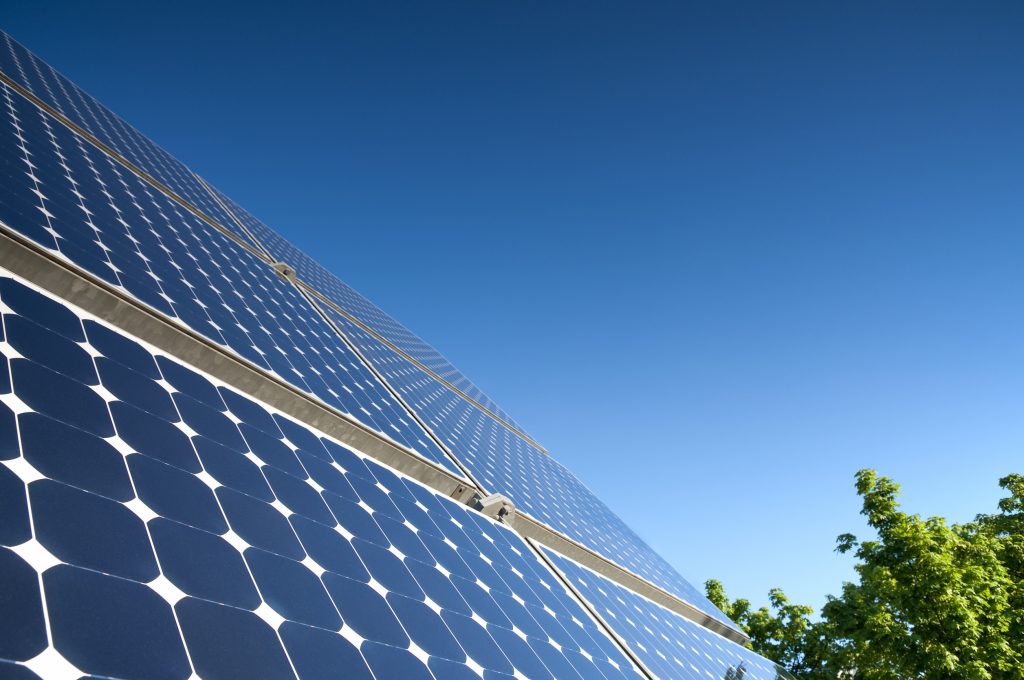
www.optimistdaily.com
How Spain’s community solar revolution is helping families power up and costs go down
BY THE OPTIMIST DAILY EDITORIAL TEAM
What started as a modest plan to give Taradell residents space to grow their own vegetables has blossomed into one of Spain’s most promising clean‑energy success stories. The small Catalan town, known for its strong culture of community action, soon saw its early gardening project expand into something much bigger.
Four local activists realized that if Taradell could organize around growing food, it could also organize around generating its own power. They formed Taradell Sostenible, a cooperative now 111 members strong that provides renewable electricity to more than 100 households, including many of the town’s most vulnerable residents.
“The question was how could people with few resources join the co-op when membership costs €100 (about $108 USD),” explained cooperative president Eugeni Vila. “We agreed that people designated as poor by the local authority could join for only €25 (about $27 USD) and thus benefit from the cheap electricity we generate.”
Supported by funding from Spain’s Institute for the Diversification and Saving of Energy (IDAE), Taradell Sostenible installed solar panels atop a sports center and a cultural building. The projects earned national attention. “We’re very proud of the fact that IDAE describes us as pioneers,” Vila said, crediting NextGenerationEU funds for helping the co-op bring its early ideas to life.
From sunshine tax to solar surge
Spain’s renewable energy boom has been a long time coming. A country blessed with abundant sunlight but short on fossil fuels, Spain once lagged on home solar due to the infamous “sunshine tax,” a policy introduced in 2015 that penalized self‑generated solar energy. After the tax was scrapped in 2018, rooftop solar installations soared, growing seventeenfold according to IDAE.
That policy shift marked a turning point. Today, IDAE is channeling its efforts toward expanding energy communities like Taradell Sostenible. The institute has earmarked €148.5 million (about $160 million USD to support 200 community energy projects nationwide.
Environmental experts have pushed for this model for years: harnessing the unused rooftops of warehouses, municipal buildings, and sports centers to power nearby homes and businesses. Recent policy changes, such as expanding the maximum distance for shared community solar from 500 meters to 2,000 meters, have helped the model spread across the country.
Tackling fuel poverty, one solar array at a time
IDAE’s renewed strategy has a clear goal: lowering energy costs for households experiencing pobreza energética, or fuel poverty. These families often cannot afford the upfront €5,000-€6,000 ($5,400-$6,500 USD) needed to install home solar systems.
By building shared, community-owned installations, the burden is lifted from individuals. Cooperatives can produce cheaper, cleaner power for residents who need it most. To strengthen that vision, IDAE encourages co-ops to collaborate, forming networks of autonomous but interconnected groups. Taradell, for example, has partnered with nearby energy communities in Balenyà and La Tonenca.
Vila says this collaboration has helped them reach residents who might otherwise fall through the cracks. “We’ve developed a formula to help people who are struggling to get by through incorporating them into a network that helps them to improve their situation,” he explained. Their work has been bolstered by the EU’s Sun4All project, which supported solar initiatives designed specifically for low‑income families.
From Catalonia to Galicia: clean energy for island communities
The movement stretches far beyond Catalonia. On the opposite side of Spain, in Galicia, tiny island communities are also preparing to benefit from IDAE’s support.
The island of Ons, home to just 92 residents, is set to replace its aging diesel generator with solar power. “With these subsidies, we’re going to install solar panels on the local authority buildings to supply energy to the islanders, most of whom are elderly and vulnerable,” said José Antonio Fernández Bouzas, head of the Atlantic Islands National Park.
Nearby, the Cíes Islands already have solar installations powering local businesses, reducing reliance on diesel generators and lowering pollution in these ecologically sensitive areas.
A smarter, more resilient grid
Local renewable energy does more than lower bills and cut emissions. It also makes Spain’s power system more resilient. The blackout that swept across Spain and Portugal earlier this year exposed the vulnerabilities of a highly centralized grid.
Community energy projects that are small, distributed, and deeply rooted in local needs offer a practical path toward preventing future large‑scale outages. They also align with how Spain actually lives; with 65 percent of the population in apartment buildings, rooftop co-ops provide access where individual home solar is not feasible.
A model for an energy future built from the ground up
Spain’s community energy revolution is still young, but its growth is accelerating. What began with four activists in Taradell has become a national movement powered by cooperation, creativity, and a lot of sunlight.
“We’re proud to be pioneers,” Vila said. And across Spain, dozens of other communities are proving that this model that is focused on being local, democratic, and accessible can redefine how a country powers itself.The post How Spain’s community solar revolution is helping families power up and costs go down first appeared on The Optimist Daily: Making Solutions the News.










